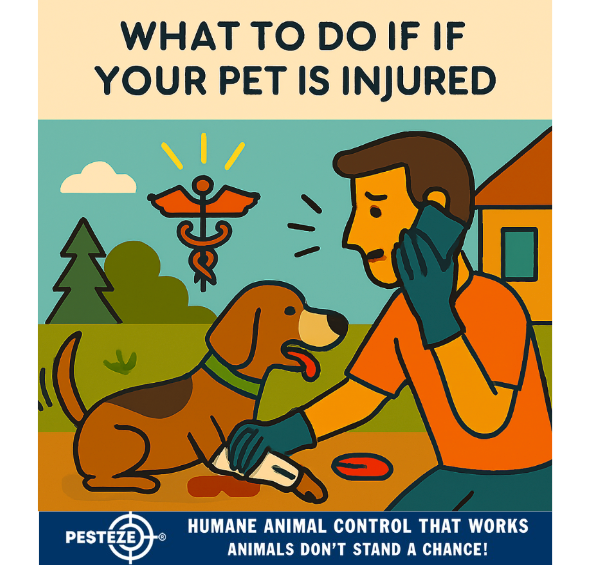WHAT TO DO IF YOUR PET IS INJURED

WHAT TO DO IF YOUR PET IS INJURED
SUMMARY
When your pet is injured, acting quickly and calmly can make a life-saving difference. Whether it’s a minor wound or a serious emergency, knowing what steps to take ensures your pet gets the care it needs. This guide outlines essential first aid tips, how to assess the severity of the injury, and when to seek professional help. With preparation and awareness, you can protect your pet’s health and ease their recovery.
FEATURES
-
Stay Calm and Assess the Injury: Observe your pet’s behavior and physical condition to determine urgency.
-
Use Basic First Aid Techniques: Apply pressure to bleeding wounds and immobilize injured limbs if needed.
-
Avoid Further Stress or Movement: Keep your pet still and quiet to prevent worsening the injury.
-
Contact Your Veterinarian Immediately: Call ahead to describe symptoms and get emergency guidance.
-
Transport Safely to the Clinic: Use a crate, blanket, or carrier to move your pet without causing more harm.
-
Monitor for Shock or Hidden Symptoms: Watch for signs like pale gums, rapid breathing, or lethargy.
GUIDE DESCRIPTION
Pet injuries can happen suddenly—whether from a fall, fight, accident, or unknown cause. In these moments, your response is critical. This guide helps you take swift, informed action to stabilize your pet and get them the care they need.
Start by staying calm. Pets can sense your anxiety, which may increase their stress. Approach slowly and speak in a soothing tone. Look for visible signs of injury such as bleeding, limping, swelling, or unusual behavior. If your pet is hiding, growling, or unusually quiet, they may be in pain.
Apply basic first aid if appropriate. For bleeding, use a clean cloth or gauze to apply gentle pressure. If a limb appears broken, avoid moving it and keep your pet as still as possible. Do not attempt to clean deep wounds or remove embedded objects—leave that to professionals.
Contact your veterinarian immediately. Describe the injury, symptoms, and how it occurred. They can advise you on whether to come in right away or monitor at home. If it’s after hours, reach out to an emergency animal hospital.
Transport your pet carefully. Use a crate, blanket, or sturdy box to keep them secure. Avoid jostling or lifting them in ways that could worsen the injury. If your pet is large, enlist help to move them safely.
Watch for signs of shock, which may include pale gums, rapid heartbeat, shallow breathing, or collapse. These symptoms require urgent medical attention.
Even minor injuries can become serious if untreated. By acting quickly and responsibly, you’ll give your pet the best chance for a full recovery.
- Amy Chang


Comments 0